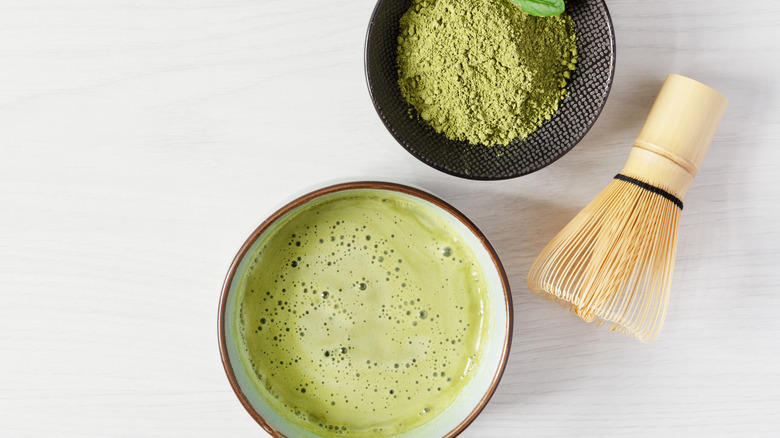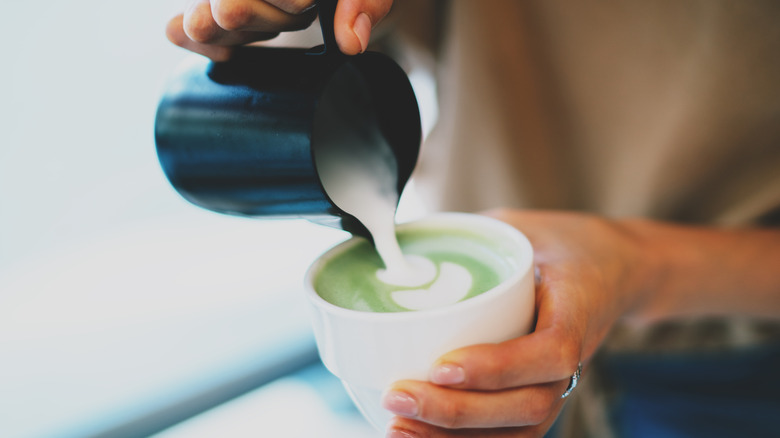You've Been Making Your Matcha Tea Wrong All Along
Matcha has been consumed in Asian countries forever, and its popularity in the West has been on the rise in recent years. Starbucks and many other coffee and tea shops now sell matcha lattes, and just a quick search online yields more and more recipes for baked goods that feature matcha. It's created a full renaissance for green tea, but before you purchase a container of this specialty tea — it can get quite expensive — there are some things you need to know about matcha.
First, you need to understand the difference between matcha and green tea before you can prepare it properly. According to Nourished Life, both drinks come from the Camellia Sinensis plant. The main difference is that this plant's leaves are steeped to make green tea (regardless of whether they're bagged or brewed as loose leaves), while matcha is the pulverized, powdered form of the leaves. Essentially, the full plant is dissolved into your water/milk — giving it a much richer color and taste — instead of tea being steeped in boiling water. This is why matcha has more caffeine and antioxidants, too. Some people even ditched coffee for matcha because of these properties.
While matcha is wonderful for the soul, many people make it wrong. Here's how you can best prepare it.
Not whisking your matcha with a bamboo whisk is a crime
Matcha isn't cheap, so no one wants to prepare it incorrectly and end up with a poor drink. However, there are easy ways to avoid the most common matcha mistakes. According to Matcha Moments, the biggest mistake people make is using boiling water to dissolve their matcha powder. Doing so leads to bitter matcha because the green tea has been scorched. Instead, water around 175 degrees Fahrenheit, rather than the boiling point of 212 degrees Fahrenheit, will best dissolve your matcha while maintaining its flavor.
At the same time, no one wants clumps in their matcha. Therefore, you should always spoon your matcha powder through a sieve before you prepare it to ensure it's clump-free and smooth, according to Craft Tea Fox. Not only are clumps annoying and often bitter to the tastebuds, but they're also fiscally wasteful. That's matcha that could've been used in your next latte!
Finally, you want to ensure you're taking proper care of the matcha. Per Craft Tea Fox, this entails a few things, including not directly exposing your matcha powder to sunlight. The sun's rays can damage it and leave it bitter, just as if it had been boiled. Likewise, they recommend always using a bamboo whisk when preparing matcha. It will aerate the matcha perfectly, which otherwise would take forever — or not be reached at all if only using an everyday spoon to mix it. Matcha is intended to be frothed before it's consumed, which also brings out its best flavor notes.
With these tips in hand, go forth and make the best cup of matcha!

